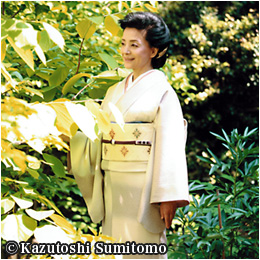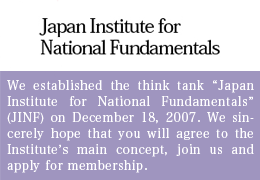NOW IS THE LAST GREAT CHANCE FOR CONSTITUTIONAL REVISION
Eying the December 14 lower house election, the Asahi Shimbun is developing a typically empty argument against a revision of Japan’s constitution now being pursued by the ruling Liberal-Democratic Party (LDP).
Casting doubt on Prime Minister Shinzo Abe’s claim of his so-called “Abenomics” economic policy as the key campaign issue, the liberal daily’s editorial charged on November 11: “The Prime Minister obviously has expressly set his mind on a revision of the constitution.” The following day, the daily’s popular Vox Populi, Vox Dei column urged its readers to scrutinize the LDP’s campaign platform, asking: “Can the party really maintain that the key issue of this election is ‘Abenomics’? Shouldn’t it in fact be the (government party’s) posture towards the existing constitution instead?”
It is the privilege of every political party to strategically determine which of its policies should be promoted as the key planks of its campaign platform. It is also to be expected that eligible voters will review the policies of an incumbent administration, including, in this case, of course, the LDP’s stance toward a revision of the constitution. Meanwhile, if the Asashi has made up its mind to discuss constitutional revision as the most crucial campaign issue for the ruling party, then the daily should comment responsibly on the election pledges of all other parties concerning this issue as well, rather than targeting the LDP’s alone.
The LDP’s manifesto clearly states it will submit to the Diet a draft of a revised constitution. The party’s manifesto during the last lower house election two years ago also highlighted constitutional revision, disseminating a clear-cut message regarding the constitution. There is absolutely no problem with such a policy.
It is the posture of the Democratic Party of Japan (DPJ) towards the constitution that is problematical. The no. 1 opposition party has failed to work out a definitive policy while it was in power in 2009-2012, or since. Although its manifesto meekly states that it hopes to “develop a future-oriented constitution,” it has yet to consolidate the opinions of its widely differing members. Instead of attacking the LDP, the Asahi should direct its doubt at the DPJ, which has no choice but to gloss over constitutional matters.
For the Asahi’s editorial staff, who appear incapable of even-handed criticism, there is a book I wish to recommend: Don’t Miss This Last Chance for Constitutional Revision, by Tadae Takubo (Namiki Shobo, Tokyo; October 2014). Takubo, an expert on international affairs, serves as deputy director of the Japan Institute for National Fundamentals, a privately financed Tokyo think tank I head. A quick read of this book will convince one how hopelessly out of touch and clueless the Asahi is in its stance toward constitutional revision, given the multiple security threats our nation now faces.
The Asahi’s Laughable Naivete
On November 20, a bi-partisan US congressional advisory panel—the US-China Economic and Security Review Commission—issued its 2014 report, sounding strong alarm about China’s persistent military build-up. “It is becoming clear,” warns the report, “that President Xi’s government is willing to have a much higher level of tension in the bilateral relationship than past administrations have.” Hinting at the possibility of China instigating a local conflict or even a war, the report notes that China under Xi “by 2020 could have as many as 351 submarines and missile-equipped surface ships in the Asia-Pacific.” Predicting that China’s nuclear force will “rapidly expand and modernize over the next five years,” the report further warns that Beijing will have “a more extensive range of military and foreign policy options…potentially weakening US extended deterrence, particularly with respect to Japan.” Put differently, American ability to defend Japan will continue to decline.
Obama may have been overawed by Xi’s confident presence, but Washington’s weak-kneed posture towards Beijing is conspicuous in its strategies pertaining to international security, finance, and economy. Such a US posture encourages China’s expansionism. On November 25, three Chinese patrol boats entered Japanese territorial waters around the Senkaku Islands, encroaching on the contiguous zone six straight days. Some from the fleet of 220-plus Chinese fishing boats were seen earlier in Japanese territorial waters off the Bonin and Izu Islands, where they still engage in red coral poaching despite tightened control by the Japanese Coast Guard. A few of these fishing boats even sailed north to the vicinity of Oshima Island off the Izu Peninsula. Fishermen from the Bonin Islands have also witnessed a group of Chinese fishing boats operating off Iwo Jima.
Neither the Coast Guard nor the Japan Maritime Self-Defense Force has yet to mete out specific steps to cope effectively with this situation. Ordinarily, foreign ships intruding into the territorial waters or contiguous zones of a country would be immediately blocked by its coast guard or navy and captured. The intruding ships would be subject to armed retaliation if they refused to leave the area swiftly.
However, the Japanese Coast Guard fundamentally is banned from taking action unless first attacked by the foreign (in this case Chinese) ships. The law makes it absolutely impossible for the Coast Guard to cope satisfactorily with this type of a “gray zone” situation short of an armed attack by the intruders. The Abe administration has strived to fill this serious security gap, such as by reaching a cabinet decision recognizing Japan’s right to collective self-defense.
The Asahi criticized the cabinet decision in its November 22 editorial. And the DPJ pledged in its manifesto to have the decision retracted. How then does the daily propose that the government deal with the red coral poachers from China? Its November 6 editorial argued:
“The first responsibility to prevent Chinese fishermen from red coral poaching lies with the Chinese government…The recent increase in the number of Chinese fishing boats witnessed in the waters around the Senkakus is gravely concerning…these ships freely cross the border line into Japanese waters, sometimes creating diplomatic problems between Japan and China. China must earnestly contemplate measures to prevent the situation from developing into something more serious.”
The Asahi’s naivete makes one laugh. Over the decades, China has adroitly used fishing boats, patrol ships, or warships—depending on the occasion—to wrest away piece by piece seas and islands belonging to her neighbors. The Asahi’s editorial writer obviously fails to understand the realities of the crafty strategies and tactics employed by China in its aggression.
Perhaps it is too much to expect a newspaper with such a helplessly naïve view of China to question the DPJ’s election pledge to have the cabinet retract its agreement on Japan’s right to collective defense.
What makes it possible for the mass-circulation liberal daily to persistently generate this type of editorial reminding one of the misguided views of Yukio Hatoyama, the failed former prime minister who briefly headed the DPJ? Declares Takubo in his book on constitutional revision: “Not a few members of the Japanese mass media go overboard developing fierce anti-Abe campaigns day in and day out. It is frightening how isolated they are from what is going on in the world outside Japan.”
Misunderstanding the “Yoshida Doctrine”
But why is the Asahi so hopelessly haunted by such insularism? The answer given by Takubo in his book is quite convincing. A former foreign correspondent and international affairs specialist, Takubo has devoted over half a century to the study of how nations have developed their respective strategies in order to cope with the changes in the international environment.
A blind acceptance of Article 9 of the constitution, which renounces war, has permeated post-war Japanese society, Takubo says. This has created new values that have made the Japanese content in their own little universe, allowing them to set the goal of being ‘an economic giant with minimum armament’—a nation that is single-mindedly committed to economic prosperity with as little armament as possible. Post-war Japanese have treasured this idea as “the Yoshida Doctrine,” grossly misinterpreting what the then Prime Minister Shigeru Yoshida envisioned as the future of a new Japan.
Right after the war, Yoshida strongly felt the need to make Japan, defeated and poor, economically prosperous with minimum armament. However, Takubo quotes a personal advisor to Yoshida—former Lieutenant General Eiichi Tatsumi—as stating that Yoshida and General Douglas MacArthur had reached an agreement that Japan would rearm itself over time and have a democratic armed forces, without ever again becoming an aggressive military power. So, from the outset, there has never been a “Yoshida Doctrine” intended to allow Japan to forever seek economic prosperity with minimum armament. And yet, most Japanese have spent the post-war period chanting the empty slogans of the supposedly pacifist “Yoshida Doctrine.”
Takubo points out that there have been three golden opportunities in the post-war era in which the Japanese constitution could have been revised. However, on each occasion, the people failed to take advantage of the opportunity, failing—like the Asahi—to see the facts that needed to be seen, or recognize the national crisis that needed to be recognized.
Today, we face a dangerous world situation compounded by a weakened foreign policy and security stance on the part of the US and intensified rule by force of Chinese and Russian expansionism. Any nation that cannot aptly adjust to the drastically changing global situation is bound to decline. This current crisis, as detailed by Takubo, in fact represents the fourth—and most likely the last—golden opportunity for Japan to change its constitution. I would very much like to recommend Takubo’s engaging and important book—most particularly to the Asahi’s editorial writers and columnists.
(Translated from “Renaissance Japan” column no. 633 in the December 4, 2014 issue of The Weekly Shincho)








